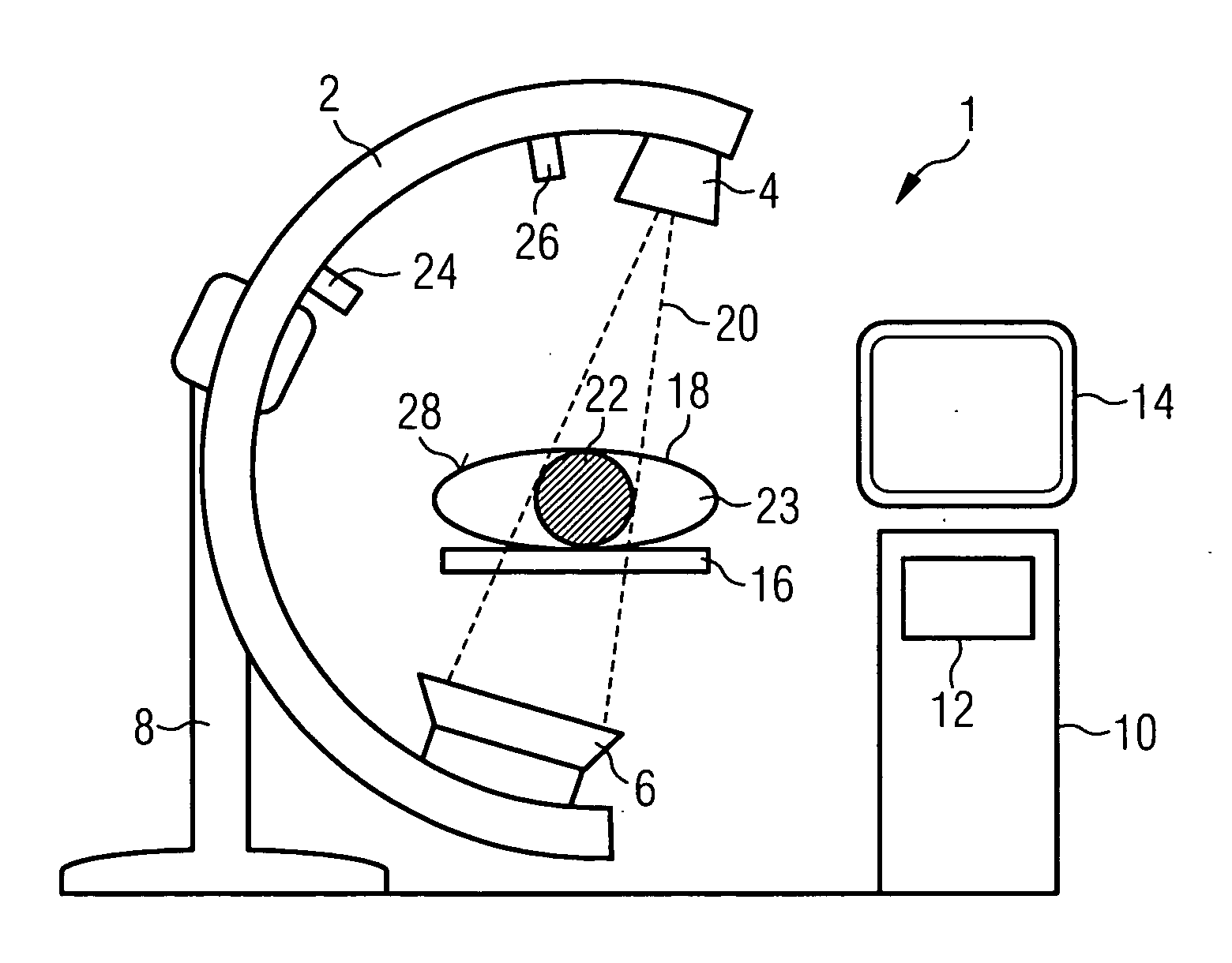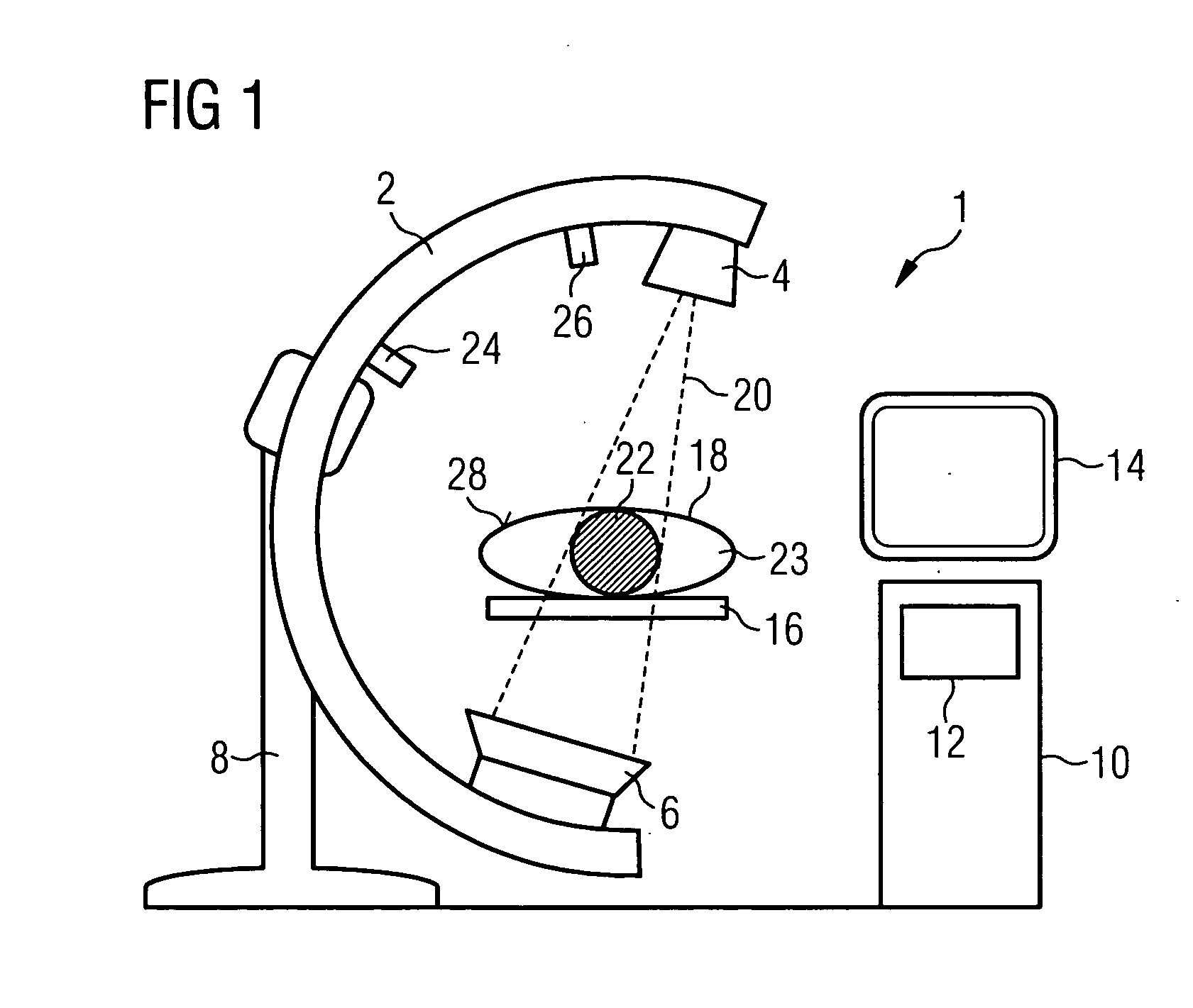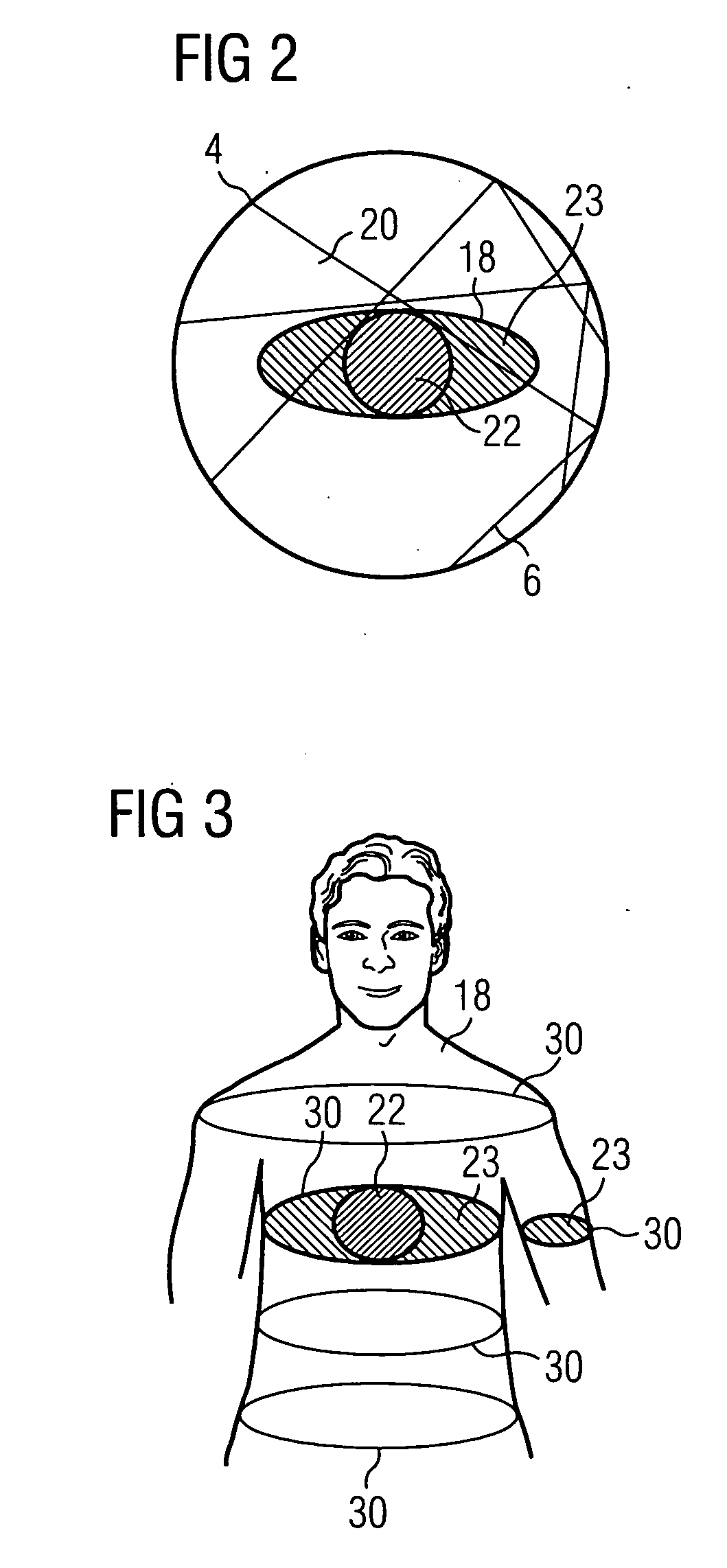Method for minimizing image artifacts and medical imaging system
a technology of image artifacts and medical imaging, applied in tomography, instruments, applications, etc., can solve problems such as inability to achieve optimal correction, and achieve the effect of minimizing artifacts
- Summary
- Abstract
- Description
- Claims
- Application Information
AI Technical Summary
Benefits of technology
Problems solved by technology
Method used
Image
Examples
Embodiment Construction
[0024] The invention is described below using the example of an x-ray C-arm system, in which the x-rayed region 22 is smaller than the patient 18. A C-arm system 1 of this type is shown schematically in FIG. 1. The x-ray tube 4 and the x-ray detector 6 are fixed here to opposing ends of a C-arm 2. This C-arm is in turn suspended in a moveable manner on a stand 8 and can thus be moved freely about a patient support 16. The rotation of the C-arm 2 about the support 16 allows a patient 18 lying thereupon to be x-rayed from different projection angles. The beam path of the fan-shaped or tapered x-ray beam is indicated with 20. The drawing clearly shows that the detector 6 is not large enough to record an image of the whole patient 18. Rather a part 23 of the patient does not lie within the x-ray fan.
[0025] This problem of the measuring field overshoot is shown even more clearly in FIG. 2. In the centre, the cross-section of the patient 18 is shown schematically as an ellipsoid. Further...
PUM
 Login to View More
Login to View More Abstract
Description
Claims
Application Information
 Login to View More
Login to View More - R&D
- Intellectual Property
- Life Sciences
- Materials
- Tech Scout
- Unparalleled Data Quality
- Higher Quality Content
- 60% Fewer Hallucinations
Browse by: Latest US Patents, China's latest patents, Technical Efficacy Thesaurus, Application Domain, Technology Topic, Popular Technical Reports.
© 2025 PatSnap. All rights reserved.Legal|Privacy policy|Modern Slavery Act Transparency Statement|Sitemap|About US| Contact US: help@patsnap.com



